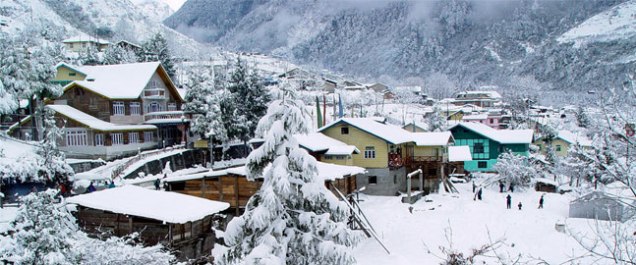There are numerous festivals celebrated in Sikkim throughout the year. Most of the people of Sikkim follow Buddhism, the festival celebrated here are associated with Buddhist and are celebrated according to Buddhist calendar. In Gompas or Monatseries of Sikkim most of the festivals are celebrated where people gather in large number to celebrate the occasion. During these festivals people of Sikkim perform colorful dance and music.
Most interesting form of ritual dance of Lamas is ‘Chaam’ which feature colorful masks and charming musical instrument. Lamas dressed with gaily painted masks, sparking jewels, ceremonial swords and swing to rhythm of drums, music and horns. Following are some festivals celebrated in Sikkim :
Saga Dawa Festival:
Saga dawa is a festival that celebrates and marks the various stages in Buddha’s life starting with his birth then enlightenment and finally his nirvana. Saga dawa is held on the full moon of 4th month of the Buddhist calendar in the end of May or early June.
Lhabab Dunchen Festival:
This festival symbolizes the descent of Lord Buddha from the heavens. Lha means ‘heaven’ and bab means ‘descent’. This festival celebrates Lord Buddha’s descent from deva realm after teaching his deceased mother, Mahamaya, Lhabab Duchen occurs on 22nd day of ninth lunar month each year.
Losar Festival:
Losar is Tibetan New Year festival and is marked with lot of gaiety, festivity, feasting and merrymaking. It is celebrated in the month of first week of February
Drupka Teshi Festival:
Drupka Teshi festival is celebrated by the Buddhists. Falls on fourth day of sixth Tibetan month, around August and celebrates Buddha’s first preaching of four ‘Noble Truths’ to his first five disciples in deer park at Sarnath in Gangtok which is secluded place called ‘Muguthang’ in extreme north Sikkim.
Bumchu Festival:
Bumchu, an age old festival of Sikkim is celebrated at Tashiding Monastery in month of January. The word Bum means pot or vase and Chu means water. During this festival, the Lamas of monastery open the pot containing holy water where level of water is predict the future. If water is to the brim, symbolizes bloodshed and disturbances and if pot is almost dry which symbolizes famine and it is half full, it foretells a year in which peace and prosperity will prevail.
Losoong Festival:
Lossong festival is celebrated on the occasion of end of the harvest season and the end of tenth month of Tibetan year in the rural Sikkim and it is marked as Bhutia festival. Chaam dancing at monasteries at Palace, Phodong and Rumtek, archery competitions and other festivities mark the occasion.
Tendong Lho Rum Faat Festival:
Specific to Lepchas, this festival marks the celebration of Tendong Hill. As per Legend, the hill had risen like a horn during a great flood to save the Lepchas.
Tihaar Festival:
It is celebrated as festival of lights in Sikkim i.e. Diwali. This festival is celebrated with lighting of Lamps accompanied with traditional caroling called Deusi and Bhailo.
Dasain Festival:
Dasain is the main festival of Hindu Nepalese in Sikkim before few weeks of Lossong festival. This too signifies the victory of good over evil. The elders of family apply ‘Tika’ on younger and bless them.
Other festivals are also celebrated in Sikkim namely Phang Lhabsol, Kagyed Dance and The Kalchakra Puja. The people who are going for ‘Sikkim Holiday Packages’ must be aware about these festivals celebrated in Sikkim.











